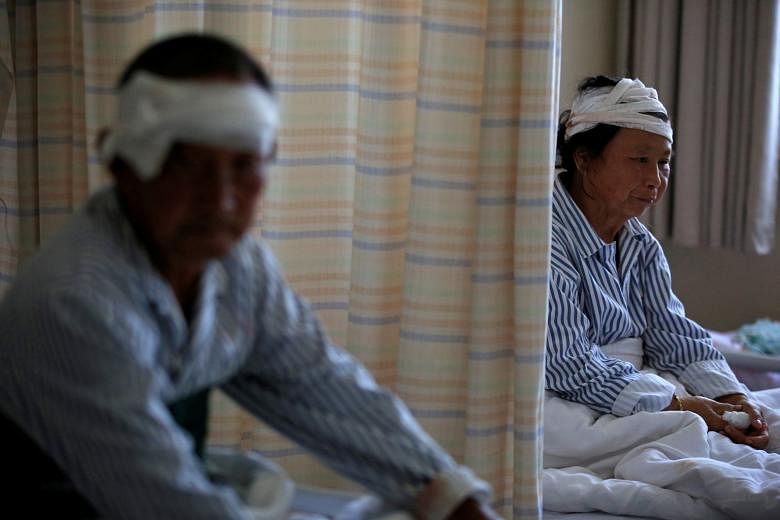BEIJING • A series of structural changes to China's current healthcare system could save Asia's largest economy up to 3 per cent of gross domestic product (GDP), according to a report released yesterday.
Conducted jointly by the World Bank Group, the World Health Organisation (WHO) and Chinese government agencies, the study suggests China take 10 years to fully implement changes, including bolstering its primary care system and allowing private sector players fair competition with the public sector.
Without such measures, the World Bank projects that health expenditure in China will increase in real terms from 3.5 trillion yuan (S$711 billion) last year to 15.8 trillion yuan in 2035, and from 5.6 per cent of GDP to 9.1 per cent in the same time frame, according to the report.
In recent decades, China has made efforts to improve healthcare access, extending a basic public health insurance network to virtually all of its people in some form since 2009.
But public hospitals are overwhelmed by the task to treat close to 90 per cent of patients for conditions ranging from the common cold to terminal cancer.
The report "makes a strong case for a new model that would both improve quality and save the economy up to 3 percent of GDP", president of the World Bank Group Kim Yong said in a conference call on Thursday.
"We're confident that these reforms will help China build a strong foundation to create a healthier population, which will be an engine for job creation and sustainable economic growth in China."
Hospitals still rely on medicine sales for revenue, creating skewed incentives for doctors to over-prescribe. Patients often need to wait hours for a brief consultation and physician-patient relations can be tense. Local media frequently report cases where disappointed patients have violently attacked or even killed their doctors.
The number of Chinese above the age of 65 is expected to grow from 140 million at the moment to 230 million by 2030, according to the World Bank report. That leaves the Chinese government with the task of paying for adequate medical services for an aging population with soaring incidences of cancer, diabetes and heart disease.
China needs to slow down the main cost drivers of healthcare and avoid creating a "high cost, low value" system that is seen in some high-income countries, the 200-page summary report says.
The report's foreword is jointly signed by Dr Kim, the WHO's director-general Margaret Chan and three Chinese ministers in charge of finance, health and family planning, as well as human resources and social security. The ministers wield significant power over the healthcare and insurance system.
BLOOMBERG

